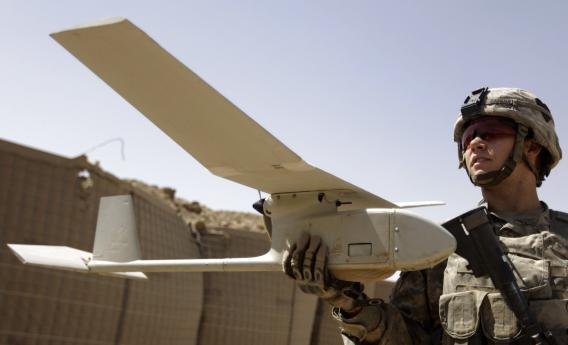Wow: One in three American military aircraft is now a drone. The Wired blog Danger Room dissects a recent Congressional Research Service report, simply titled “U.S. Unmanned Aerial Systems,” that looks at the ever-more-prominent role being played by drones. In 2005, drones made up just 5 percent of the military’s aircraft. We can expect more drastic changes to military technology soon, too. Says Danger Room,
And the current fleet of flying robots is just the start. The Navy’s developing a next-gen drone that can take off and land from an aircraft carrier. Future missions, the report finds, include “stand-off jamming” of enemy electronics; “psychological operations, such as dropping leaflets” over an adversary population; and even measuring the amount of radiation in the earth’s atmosphere. The military’s working on increasingly autonomous drones — including tiny, suicidal killers — and on increasing the number of drones a single ground station can operate.
That last line—about increasingly autonomous drones—is perhaps the most thing here. The drones used today by the U.S. military, whether tiny spy bots collecting data or intended to drop bombs, are directed by humans. Building more autonomous decision-making into these machines could be risky.
In April 2011, my colleague William Saletan wrote in a piece titled “Predators Need Editors”: “This is the real danger of drones: that we’ll turn them into labor-saving devices. We’ll take people out of the weapon control chain because they’re expensive. We’ll trade civilian safety for cost control.”
Read more on Danger Room.
